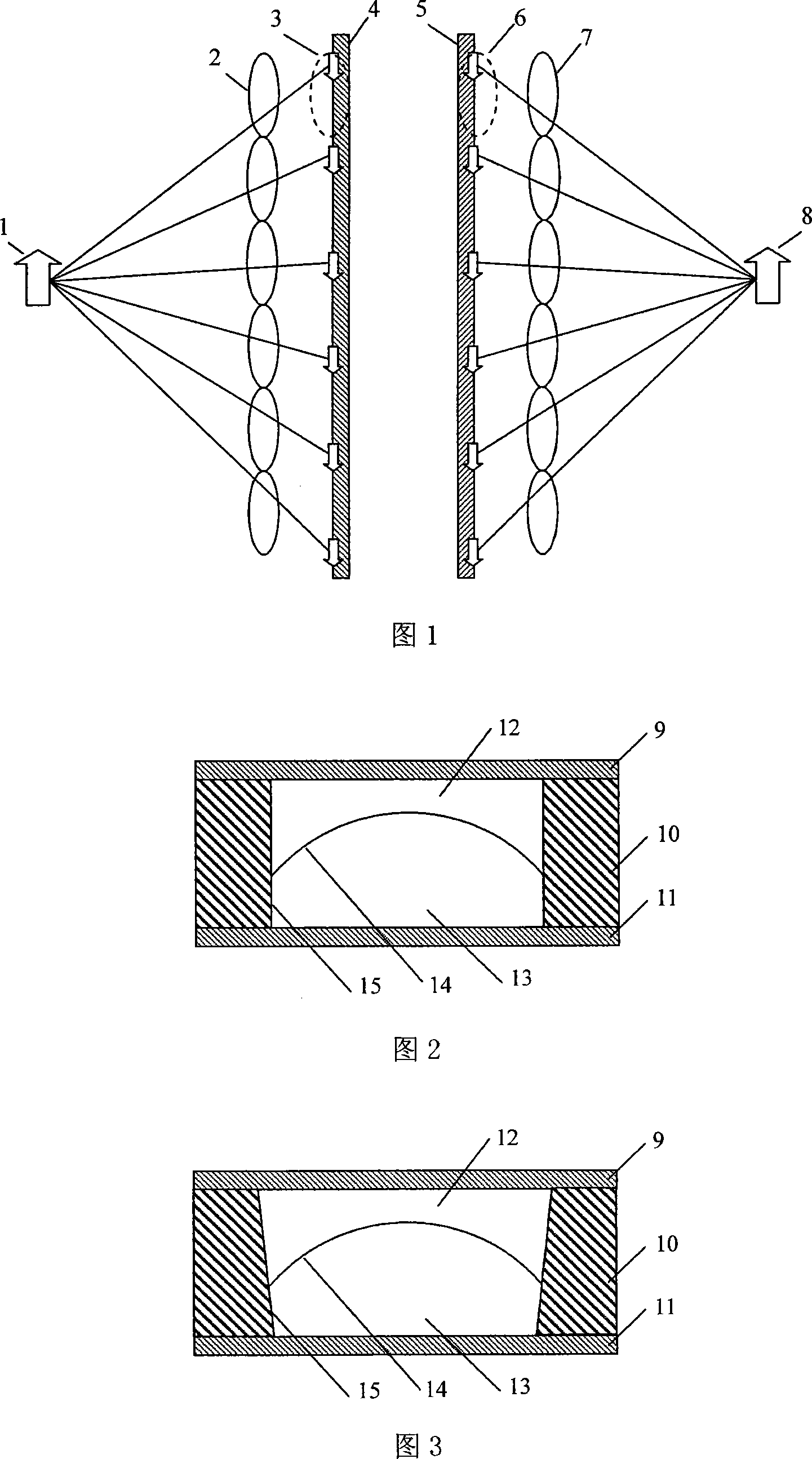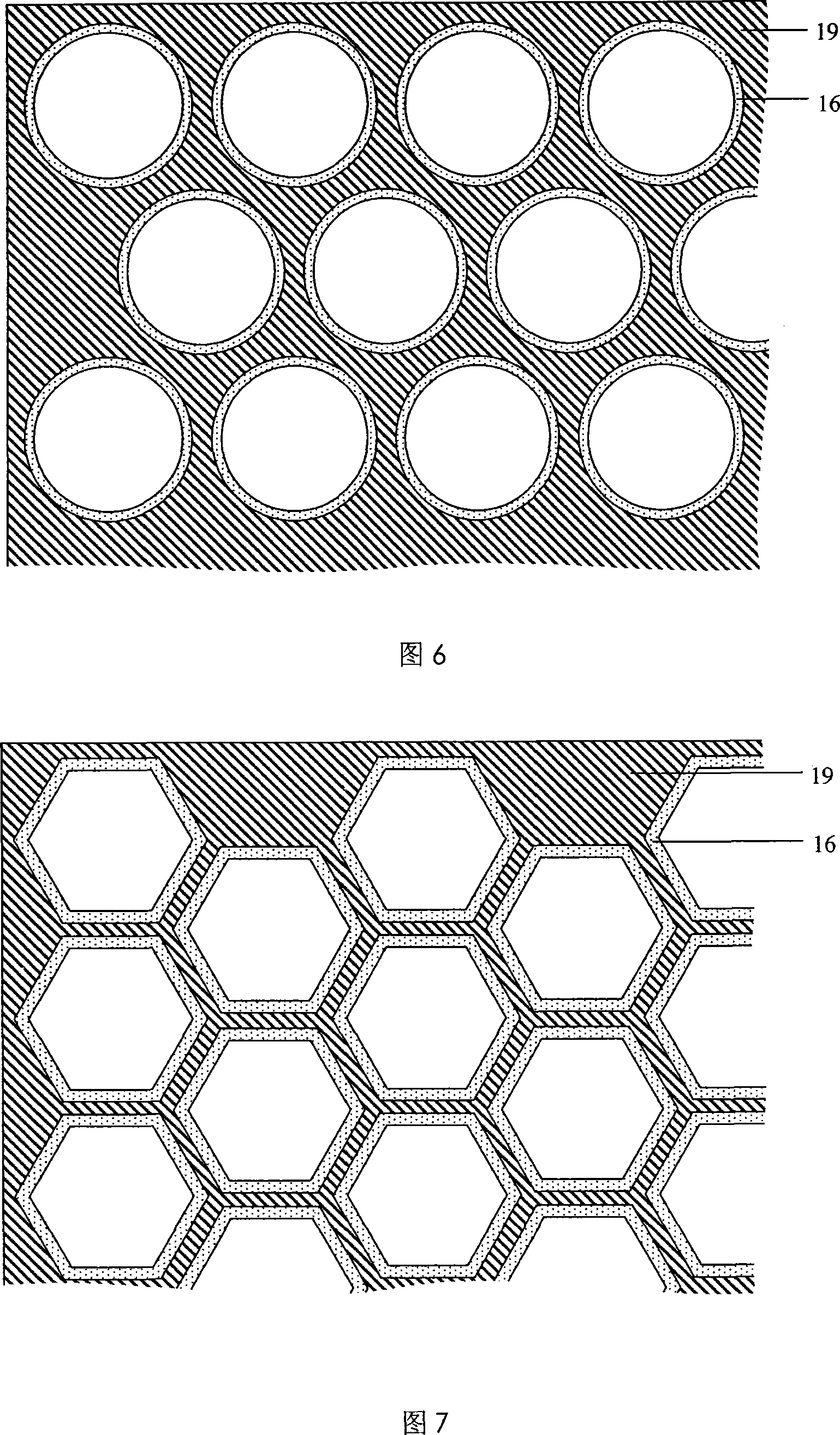Three-dimensional stereo display
A three-dimensional, display technology, applied in instruments, optics, lenses, etc., can solve the problems of fixed display focal length and inability to dynamically adjust the focus in real time, and achieve the effect of increasing the sense of presence, simple structure and low cost
- Summary
- Abstract
- Description
- Claims
- Application Information
AI Technical Summary
Problems solved by technology
Method used
Image
Examples
Embodiment Construction
[0022] FIG. 4 is a cross-sectional view of a preferred two-dimensional liquid lens array 22 of the present invention. Similar to the traditional liquid single-lens system, a two-dimensional liquid lens array is formed in the composite cavity composed of the first transparent plate 9, the second transparent plate 11 and the mesh hole 19, and the first transparent plate 9 and the second transparent plate 11 are composed of a transparent plate Made of glass or transparent plate resin, the mesh hole 19 can be made of a metal conductor covering an insulating layer, such as indium steel covered with a layer of polyimide, or made of a resin material that wraps a conductive layer and an insulating layer in turn, and the conductive layer Indium tin oxide can be used, and polyimide is used for the insulating layer. The cavity contains an immiscible electrolyte solution 13 and an insulating solution 12, which have different optical refractive indices. The electrolyte solution 13 can be c...
PUM
 Login to View More
Login to View More Abstract
Description
Claims
Application Information
 Login to View More
Login to View More - R&D
- Intellectual Property
- Life Sciences
- Materials
- Tech Scout
- Unparalleled Data Quality
- Higher Quality Content
- 60% Fewer Hallucinations
Browse by: Latest US Patents, China's latest patents, Technical Efficacy Thesaurus, Application Domain, Technology Topic, Popular Technical Reports.
© 2025 PatSnap. All rights reserved.Legal|Privacy policy|Modern Slavery Act Transparency Statement|Sitemap|About US| Contact US: help@patsnap.com



